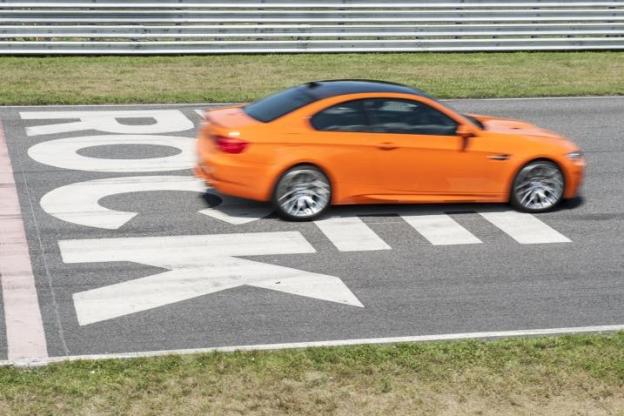 There seems to be a trend of naming performance cars after racetracks. Ford has the Mustang Boss 302 Laguna Seca, Vauxhall has the Corsa VXR Nurburgring, and, now, there’s the BMW M3 Coupe Lime Rock Park Edition. The M3 is already one of the best performance cars on the market, so will naming it after a racetrack make it better?
There seems to be a trend of naming performance cars after racetracks. Ford has the Mustang Boss 302 Laguna Seca, Vauxhall has the Corsa VXR Nurburgring, and, now, there’s the BMW M3 Coupe Lime Rock Park Edition. The M3 is already one of the best performance cars on the market, so will naming it after a racetrack make it better?
“Lime Rock Park” may not sound as sexy as “Laguna Seca” or “Nurburgring,” but it’s actually one of America’s most storied tracks. Nestled in the hills of northwestern Connecticut, it hosted Trans Am and sports car racing in the ‘60s and is still on the American Le Mans Series calendar today. The 1.53-mile course’s scenery and tight turns made it a favorite of the late Paul Newman. BMW is one of the track’s biggest sponsors.
The name has provenance, but what makes a Lime Rock Park Edition different from a normal M3? Apparently, not too much. The special edition comes in “rare” Fire Orange paint, similar to the color offered on the M3 GTS.
The car also gets carbon fiber front and rear spoilers. The Lime Rock Park Edition gets a titanium exhaust system, but no other mechanical modifications. The stock M3’s 4.0-liter V8 remains, making the same 414 horsepower and 295 pound-feet of torque.
On the inside, the Lime Rock Park Edition sports a flat-bottomed steering wheel and a numbered plaque on the center console. If that’s not good enough, a decal on the left-rear quarter window and a certificate of authenticity should confirm this M3’s pedigree.
These additions do make the M3 Coupe Lime Rock Park Edition look better, but they do not make it go faster. By all accounts, performance will be the same as a standard M3.
One area of the car that is enhanced is the price. The Lime Rock Park Edition costs $70,995, or about $5,000 more than a non-Lime Rock M3 Coupe.
The M3 is a great car, and the Lime Rock Park Edition doesn’t change that. Which is a problem. The Boss 302 Laguna Seca is the best handling Mustang money can buy, and even the original cars-named-after-tracks, the Ford Torino Talladega and Dodge Charger Daytona, had aerodynamic enhancements that made them faster around NASCAR ovals. In contrast, the Lime Rock Park Edition is just a trim package.
Does BMW think that, just because a car is named after a racetrack, people will pay extra for it? If so, maybe it’s time to stop naming cars after tracks. The whole thing seemed a bit odd anyway. What if I want to take my Laguna Seca to, say, Watkins Glen? Will it cause a universe-ending paradox?
Few people watch racing, but the names of tracks are still evocative. But, they’re really just patches of asphalt; the cars that drive on them need to be good, regardless of their names.



